autumn-olive (Elaeagnus umbellata)
Elaeagnaceae, the oleaster family
How to recognize autumn-olive. This invasive shrub with alternately arranged smooth-margined elliptic leaves has stems that are peculiarly speckled with a brown scaly covering.
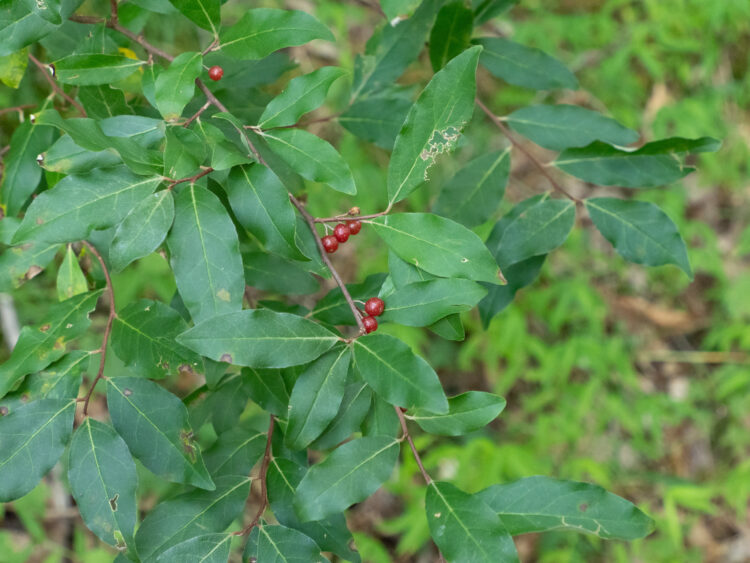
Autumn-olive is an alternate-leaved shrub.
The leaf undersurface is scaly as well, with a silvery cast.
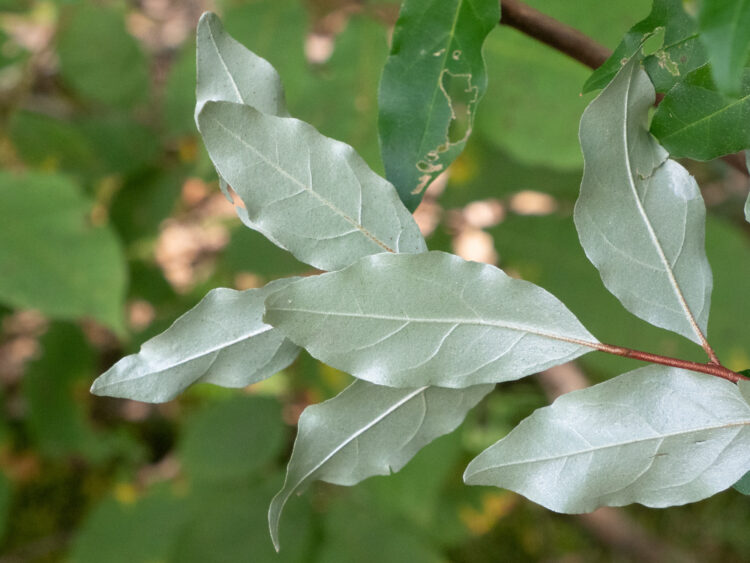
Autumn-olive leaves are silvery beneath.
Flowers and fruits. Autumn-olive flowers, produced abundantly in May, are 4-merous, about 1 cm. long. They lack petals, but have sepals that are petal-like.
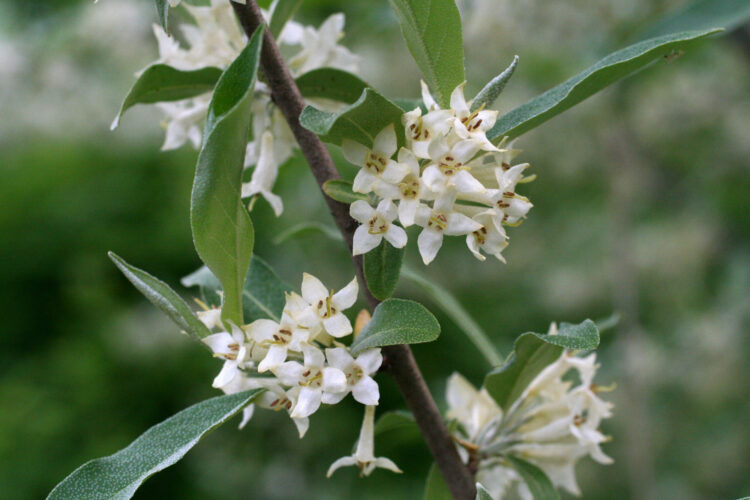
Autumn-olive flowers are apetalous, with 4 stamens and 4 conspicuous sepals.
May 5, 2006, Delaware County Ohio.
The fruits are globe-shaped red drupes that are relished by birds.
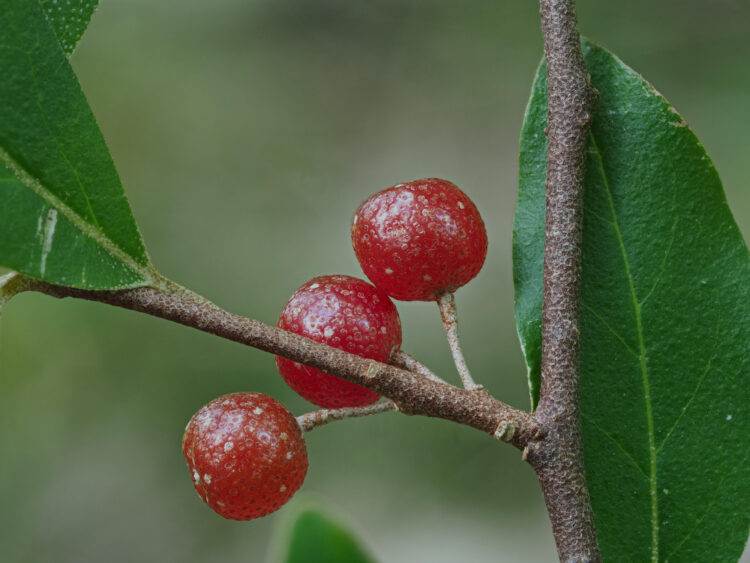
autumn-olive fruits
In the winter. Autumn-olive twigs are covered with circular scales.
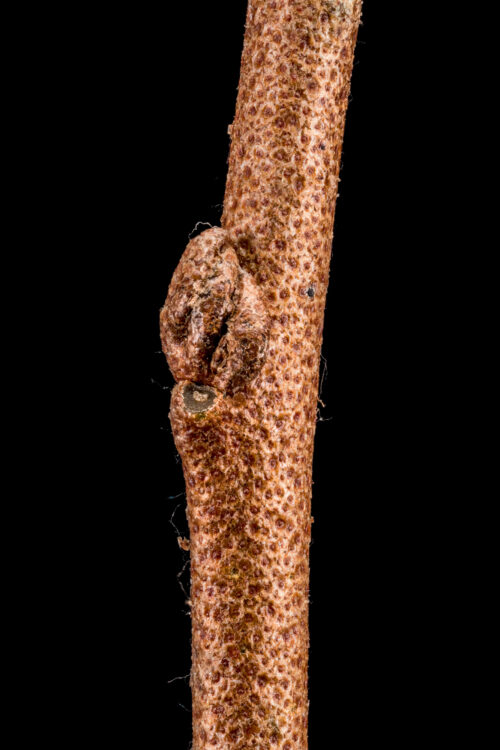
Autumn-olive twigs are covered with circular scales.
Where to find autumn-olive. The Ohio Invasive Plants Council, in their Fact Sheet No. 7 tells us that “Autumn-olive and Russian-olive have nitrogen-fixing root nodules, which allow them to adapt to many poor soil types including bare mineral substrates. Autumn-olive is found throughout Ohio, occurring in various open to semi-shaded habitats including old fields, grasslands, barrens, woodlands, savannahs, alvars (limestone prairies), roadsides, reclaimed strip-mined areas, and open disturbed sites. ”
Scanned Image from an Old Book
(Flora of West Virginia, by P.D. Strausbaugh and Earl L. Core)

autumn-olive
Ooh ooh. I have a question!
Why does autumn-olive do well on otherwise barren sites?
There are nitrogen-fixing nodules on the roots.
